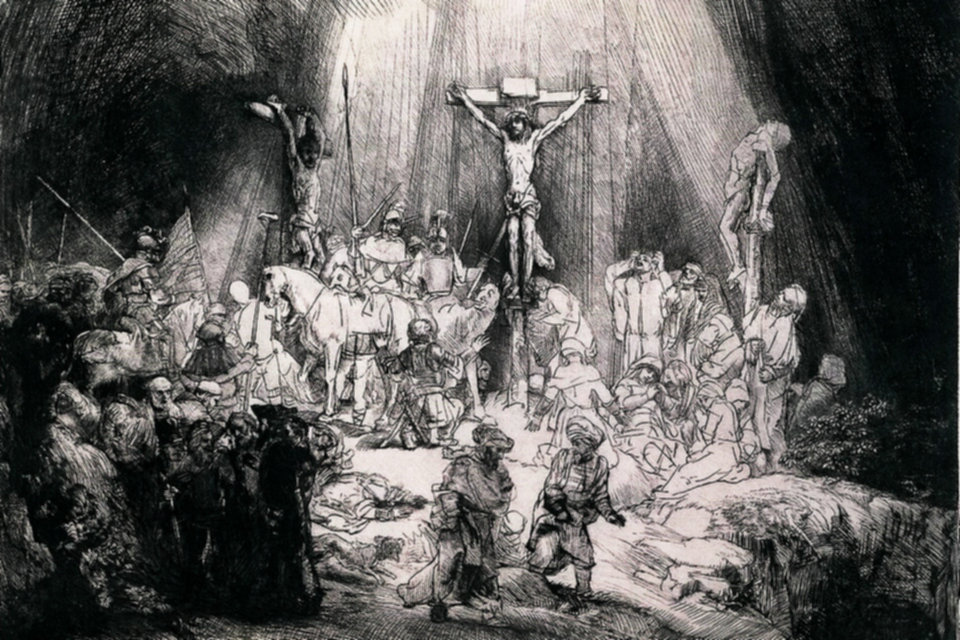Etching revival


Etching Revival, means “rebirth of etching”, is an expressionthat indicates the huge development and diffusion of the art print as an art form between the second half of the nineteenth century and the first decades of the twentieth century. In particularly in the United States, the Etching Revival is the re-emergence and invigoration of etching as an original form of printmaking during a period of time stretching approximately from 1850 to 1930.
Historical outline
During the century after Rembrandt’s death the techniques of etching and drypoint brought to their highest point by him gradually declined. By the late eighteenth century, with brilliant exceptions like Piranesi, Tiepolo and Goya most etchings were reproductive or illustrative.
Origins of the phenomenon
However, in the 1840s and 50’s in France, a number of artists did produce some landscape etchings which seemed to recapture some of the spirit of the Old Master print. Daubigny, Millet and especially Charles Jacque produced etchings that were different from those heavily worked reproductive plates of the previous century.
The phenomenon, which had its beginnings in France with the work of artists from the Barbizon school such as Charles-François Daubigny and Jean-François Millet and with the foundation of the Société des Acquafortistes in Paris in 1862 by the publisher Alfred Cadart, developed later in the United States in the sixties and seventies of the century, and was probably generated by the rediscovery by the romantic and realist painters of the production of Rembrandt and Albrecht Dürer.
An important growth factor in the sector was certainly the strong demand for affordable goods and artistic objects by the emerging classes and the middle class, whose economic possibilities, individually reduced, were collectively enormous, enough to finance a thriving market of products. printed: photographs, books, reproductions of paintings obtained thanks to the galvanotype, introduced in 1845, and precisely, artistic prints .
Several people were of special importance to the French Etching Revival. The publisher Alfred Cadart, the printer Auguste Delâtre, and Maxime Lalanne, an etcher who wrote a popular textbook of etching in 1866, established the broad contours of the movement. Cadart founded the Société des Aquafortistes in 1862, reviving the awareness of the beautiful, original etching in the minds of the collecting public. Charles Méryon was an early inspiration, and close collaborator with Delâtre, laying out the various possible techniques of modern etching and producing works that would be ranked with Rembrandt and Dürer.
The success and the main exponents
In the United States, the New York Etching Club, founded in 1877, helped to connect the artists dedicated to the press and spread their fame and production, also thanks to exhibitions such as the American Art Review, held annually between 1879 and 1881 Among them, a leading role played James Whistler. In addition to him, William Merritt Chase, Samuel Colman, Thomas Moran, John Henry Twachtman and Julian Alden Weir were among the American painters who made the most use of the medium.
In addition to a great influence on German expressionism, the ” etching revival ” made it possible to approach the press to the major exponents of impressionism, post-impressionism and the first avant-gardes, including Édouard Manet, Edgar Degas, Mary Cassat, Camille Pissarro, Henri de Toulouse-Lautrec and Pablo Picasso.
A Treatise on Etching by Lalanne was translated by S.R. Koehler and published in the United States in 1880. It played a significant role in the Etching Revival in America. However, before the translation of Lalanne’s book, Philip Gilbert Hamerton had become an enthusiastic promoter of etching in Britain. His Etching and Etchers (1868) was more an art history than a technical text but it did much to popularize the art and some of its modern practitioners. The book went through many editions till the 20th century. By the 1870s Hamerton was also publishing an influential periodical, titled The Portfolio, that published etchings in editions of 1000 copies.
For Hamerton and others, the father of the British Etching Revival was Francis Seymour Haden, the surgeon etcher, who, with his brother-in-law, the American, James McNeill Whistler, produced a body of work starting around 1860 that still stands as one the highpoints of etching history. Haden was a collector and authority on the etchings of Rembrandt and it comes as no surprise that as Whistler, the younger man, began to show signs of veering far from the 17th-century model, Haden and he parted company.
It was Whistler who convinced the artist Alphonse Legros, one of the members of the French Revival, to come to England as a teacher. This linking of the art of the two countries, though short-lived, did much to validate etching as an art form. Very soon, French etching would show the same modernist signs that French art showed generally, while English and American etching remained true to the kind of technical proficiency and subject matter artists revered in Rembrandt. One distinct aspect of the revival, in contrast with the Old Master period, was an interest in giving unique qualities to each impression of a print.
The market crash
Despite the forecasts of many, including Jean-Auguste Ingres, Gisèle Freund and Charles Baudelaire, the art printing market proliferated despite the advent of photography, considered the main “disaster” for the figurative arts, but came strongly downsized by the outbreak of the First World War and especially by the Great Depression of 1929 .
Fall in popularity
Etching as a collected and therefore as a practised art appears to have died with the Great Depression. Without a large group of collectors many artists returned to their canvases. Etchings fell hugely in value until the 1980s when a new market (albeit a small one) began to develop for what is now seen as a small but important tributary of the stream of 19th- and 20th-century art.